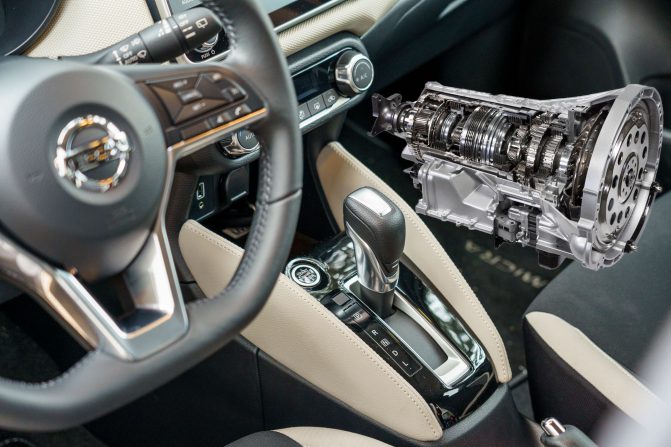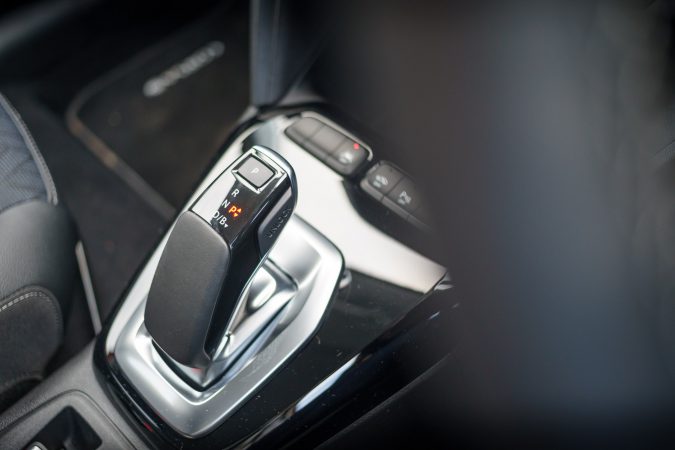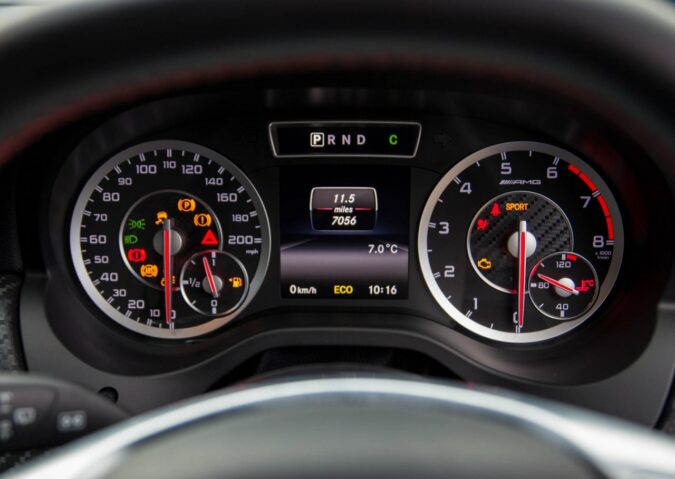There are a few erratic behaviors a car demonstrates that car owners definitely dread. However, I’d vouch that none feels quite as intimidating as a transmission-related issue. Such as, when shift solenoids symptoms appear. Transmissions are expected to last as long, if not longer than the engine itself. However, modern complications have made transmission reliability a top concern for car buyers.
Transmission failures can be catastrophic, leaving you stranded while racking up exorbitant repair costs. Thankfully though, transmissions rarely fail outright without any signs. Typically, they demonstrate signs of failure way before they give up entirely. By paying close attention to those symptoms, you can avert the fault from further developing.
Because there are various types of transmission, we’ll be emphasizing one of the most commonly found in most modern cars nowadays. Many of today’s cars come with an automatic transmission. In fact, some manufacturers have deviated from twin-clutch units in favor of automatic transmissions.
Automatic Transmission
It’s important to note that for an automatic transmission to function optimally, a multitude of parts has to work together in unison. First, you have the actual transmission housing itself which contains the core of a transmission unit. Inside the housing are many sets of clutch packs and various planetary geartrain.
For an automatic transmission to change gears, all the gear sets have to engage and disengage in a certain predetermined order. Just by changing the planet carrier’s drive method, 3 different gear ratios can be produced. So an automatic transmission has different combinations of planet gear sets for drivable gear ratios.
This is why an automatic transmission can remain relatively small yet be built with 10 forward gears in modern cars. To engage and disengage the various gear sets, transmission fluid pressurizes and releases the clutch packs. The distribution of transmission fluid inside an automatic transmission is managed by the valve body.
The valve body is essentially a maze filled with tens upon hundreds of fluid channels. The valve body is constantly submerged and fed with transmission fluid during its operation. Inside the valve body are springs and solenoids that operate jointly to pressurize and change the path for the transmission fluid to flow through.
Of course, with solenoids, you need a computing unit to energize them. That’s the transmission control unit or electro-hydraulic controller unit. In some transmissions, this controller is incorporated directly within the valve body itself. Just by manipulating the various transmission solenoids, the automatic transmission can switch gears autonomously.
Therefore, you can imagine the shift solenoids as the heart of the transmission unit, and the valve body as the arteries. If something goes wrong with the solenoid operation, your transmission won’t be able to shift properly or shift at all.
Shift Solenoid
Solenoids operate by gradually building current from resisting voltage flow. The greater the current, the stronger the magnetic field. When this magnetic field is strong enough, it’ll operate a plunger which in turn changes the fluid flow path. There are also pressure regulating solenoids in a valve body that alters the fluid pressure for different conditions.
The transmission control module is sometimes referred to as an electro-hydraulic controller since the transmission solenoids are fundamentally hydraulic valves that operate electronically. The TCM has to switch the various solenoids on and off at the right time for ideal transmission shifting.
Therefore, the whole operation of an automatic transmission shifting process can actually be simplified. Your main engine computer coordinates with the ABS computer to deliver driving information to the transmission control unit. This information includes factors such as vehicle speed, throttle position, engine speeds (RPM), etc.
Then, all the pertinent details necessary to determine shift behavior is compiled and further analyzed by the transmission controller. This also includes driver demand, such as sport mode or manual shifting. The transmission controller’s job is to turn that information into solenoid operation.
It’ll switch the shift solenoids accordingly to achieve its objective. When the solenoid receives the switching signals from the transmission controller, it engages the spring-loaded plungers and alters the transmission fluid travel path. The fluid travels through the channels inside a valve body and flows toward the respective clutch packs and bands.
The pressurized clutch packs will, in turn, engage the gear sets. By designing how and when each planetary gear set engages, multiple desirable gear ratios can be derived from just a few gear sets. In transmissions with a physical transmission selector lever, the lever actually operates a mechanical valve within the valve body that also modifies the fluid flow path.
Bad Solenoid Symptoms
Obviously, the transmission solenoids play a huge part in a transmission’s operation. It’s not acceptable for even one of the solenoids to fail, as it will cause improper shifting and rough operation of the transmission.
However, in most cases, solenoids rarely do fail outright. Over time, shift solenoids start to wear out and might not manage optimum capabilities. When this happens, the plunger’s switching time might be delayed or just undesirable. Therefore, shifting action might not feel as smooth and prompt compared to a new transmission.
Shift Solenoids Symptoms #1: Poor Shifting Quality
When a transmission solenoid fails, you’ll most definitely notice the impact on shift quality. Each solenoid is responsible for different tasks, and the transmission only shifts neatly if everything happens together. This means there isn’t a solenoid for every gear, so you just lose that gear in particular.
What actually happens when a solenoid isn’t functioning correctly is a single clutch pack might not be engaged or disengaged on time. This clutch pack might be responsible for multiple gears in an automatic transmission.
When a clutch pack isn’t being pressurized to specifications, it translates directly to the shift operation. What you’ll perceive are delayed shifting, jerky shifting, or even gears slipping out. In some cases, the car might not shift into certain gears at all.
If your transmission is slipping in every single gear, this can mean that there’s trouble with the pressure regulating solenoid. In severe cases, a failure with this solenoid can cause your transmission to give up entirely.
Typically, the effects are felt in both ways. This means that it can also affect the downshifting of the transmission. The transmission might refuse to downshift altogether, leaving you stuck in neutral. With that said, a solenoid that’s only starting to go bad might not produce any symptoms at all.
Shift Solenoids Symptoms #2: Check Engine Light (And/Or Transmission Warning Light)
If there’s something obviously wrong with your car, then it should trigger a check engine light. In some cars though, there will even be an automatic transmission warning light. By this stage though, you should definitely visit a local workshop to get it sorted.
With that said, if you own an earlier car, especially one built before the advent and popularity of clutch-operated transmissions, there might not be any engine code defined for transmission faults. This is because earlier transmissions are generally mechanical, with very few electrical components inside. This means that transmission abnormalities are not monitored as thoroughly.
This is in contrast to modern automatic transmissions. There are more electrical parts within with an external transmission control unit monitoring the transmission performance. Factors such as clutch filling times and pressure are major elements for ideal transmission shifts.
These are monitored so the transmission controller can adapt to clutch pack wear and tear. If the filling times are out of specification, it’ll flag a trouble code. On newer automatic transmissions, the transmission controller is typically incorporated into the valve body or within the ECU.
Shift Solenoids Symptoms #3: Limp Home Mode
The transmission error code will also help your technician to determine the problem quickly and effectively. Therefore, if your choppy shifts are accompanied by a check engine light, then a workshop visit is way overdue.
It’s also worth noting that when there’s an automatic transmission-related issue, there’s a good possibility that your car will enter ‘limp-home’ mode. When this happens, the automatic transmission will default to a single drive gear, normally gear 2 or 3, so you can drive it as long as possible to the workshop.
This is mainly to prevent further damage to the transmission. It’s easy for a slipping transmission to start overheating due to the excess heat produced by friction from the clutch packs. This ingenuity of a default drive gear is made possible thanks to the properties of solenoids. A solenoid can be normally open and closed.
If those solenoids are not energized, the transmission fluid flow then defaults to a safe state. The fluid pressurized the necessary clutch packs to shift to the default gear.
Shift Solenoids Symptoms #4: Low Power, Odd Car Behaviour
A poorly performing transmission would also behave strangely in general. This can heavily impact the drivability of your car. In some cases, the transmission might excessively rev out a single gear in particular before shifting to the next.
It’s also possible that your car will shift into the gear fine, but it’ll constantly slip out of gear whenever you apply power. This is a sign that the transmission fluid pressure is insufficient to keep a clutch pack engaged under load.
When the transmission does shift into gear, it might be very rough and sudden. It’ll feel like a manual transmission car (if you know how to drive a stick) when you release the clutch too quickly. Sometimes this might be mistaken as an engine that’s hesitating or struggling, when in fact it’s a transmission fault.
Can You Drive With A Bad Shift Solenoid
It can be daunting when you’re faced with a transmission-related issue. Especially when you’re unfamiliar with the mechanics of an automatic transmission. This can be problematic especially if your car remains seemingly drivable. It tricks you into a sense of security.
When you’re dealing with a transmission-related issue, it’s best that you consult a workshop as soon as possible. This is made easier if your car can still be driven. Don’t attempt to use your car as it is for your day-to-day commute.
It’s advised so because a transmission issue can quickly snowball into catastrophic transmission failure. By that time, a simple solenoid replacement or even transmission fluid change may not remedy your issue anymore. Due to the nature of an automatic transmission, it’s quite delicate.
Transmission Solenoid Troubleshooting
This stands true if you have an older car without transmission-related error codes that can appear. You should recognize the symptoms of a faulty transmission and consult a local workshop as soon as possible. That said, older band-type transmissions with mechanical valves can last a long time even when neglected.
Once you experience the aforementioned symptoms, drive gingerly to the workshop. Do not put too much load on the transmission. If needed, you can always manually select a gear that’s not slipping and stick with that gear. It’s important that you avoid overheating your transmission when you have low fluid pressure.
A quick check you can perform is to inspect your transmission fluid level. Make sure you still have adequate transmission fluid and it’s not overfilled. Either can cause serious shifting issues. That said, on some newer cars, manufacturers have eschewed the transmission dipstick, some even removed the tube altogether. You need a diagnostics scanner or a special tool to check the transmission fluid level in this case.
If you have low fluid levels, check whether you’ve developed a transmission fluid leak. If it’s alarmingly low then it’s possible that you might’ve hit your transmission fluid pan and caused it to crack. You should stop driving and ask for a tow service when this happens.
What Causes Transmission Problems
It needs little reiterating, but failure comes with age. The transmission solenoids reside within an intricately self-contained system that can be tough on any electrical system. Over time, the solenoids, being continuously bathed in transmission fluid, can clog up with foreign particles. This causes performance issues with the solenoids, changing how the fluid flows.
The issue with an automatic transmission is that the valve body itself consists of tiny oil channels. The tolerances for dirt or excessive metal shavings within the oil channels are minimal. Shift solenoids themselves incorporate a small filter web to reduce the chances of failure. Regardless, over time the buildup of minuscule particles on the solenoids can cause shift issues.
Although rare, it’s also entirely possible that the solenoids have just stopped working. Coil windings can degrade over time, reducing the magnetic strength. It can even be an internal open circuit or short within the solenoid causing a failure.
What Causes A Valve Body To Go Bad
It’s worth noting that your transmission issues may begin to surface the moment you change your automatic transmission fluid. This can happen from reasons like improper fluid level, incompatible fluid, or just dirty transmission fluid being introduced. Be sure to check the fluid level yourself once you get it changed.
Newer transmissions might require a bleeding process once you’ve performed a repair on your transmission, or just replaced the fluids. This is typically accomplished via a diagnostics system. This is required because the air within a hydraulic valve system can actually airlock the system. Automatic transmissions do have a vent that facilitates self-bleeding processes though.
Also, this might not be entirely obvious, but fluid contamination can also be a huge problem. Most people would think that this wouldn’t be a problem, as long as you keep a tab on your transmission fluids. However, some transmissions implement a transmission fluid cooler into the coolant radiator.
Therefore, when this transmission fluid cooler starts to leak, coolant can quickly enter and circulate within the transmission. As you can imagine, transmission fluid stops being effective once it’s contaminated with coolant. When this happens the transmission fluid turns into a milky color.
Transmission Shift Solenoid Test
The issue with transmission-related issues is the fact that the system works as a whole, and once there’s a problem with it, it’s difficult to pinpoint the issue. The process can be simplified if it’s a modern automatic transmission with error codes that can help determine the fault.
However, it always helps to start from the easiest issue first. The transmission fluid is behind the main operation of any automatic transmission. Therefore, always check your transmission fluid first. That said, it might not be possible to check the fluids yourself. As mentioned prior, you might need a special dipstick that can be bought online or a scan tool.
If possible, drain your own transmission fluid so you can get an idea of your transmission’s condition. You can also use a paper towel to sample your fluid condition to compare it against other examples online. You shouldn’t find too many metal shavings on it, which can indicate internal transmission damage.
If your transmission fluid seems fine, then a diagnostics scanner is needed in most cases to perform an in-depth diagnosis. In earlier automatic transmissions though you can find wiring information online and attempt to diagnose the actuation of the solenoid by directly applying some voltage to it.
How To Test Shift Solenoids
Otherwise, diagnostic scanners can be used to remotely activate the solenoids. A solenoid that’s operating normally should produce an audible clicking sound. This can rule out the fact that you might have a malfunctioning solenoid, although in newer cars that should trigger a fault code.
If the solenoids operate fine, then a valve body removal is necessary for further diagnosis. Removing the valve body can reveal a lot about your transmission. Some might prefer to leave this job for the workshop though. It’s a bit more involved than replacing the transmission fluid.
In general, automatic transmission issues are relatively scarce. If you start experiencing shift issues early into your car ownership, then you should suspect that it’s a recurring concern with the automatic transmission itself. You can find this information online, just search for similar complaints from other owners.
It might be a design flaw that the manufacturer itself has issued a service recall for. In some cases though, the problem might just be widespread enough that you can find it online. A case like this can be observed with Volkswagen and their DSG 7-speed transmission. The dry clutch within failed so frequently that Volkswagen had to acknowledge there is an error with the transmission design.
Solenoid Replacement
Thankfully, if you’ve narrowed the fault down to the transmission solenoid, the job to replace it is not all too difficult. You have to ensure that you have the appropriate spare part and tools before committing to the job though. A diagnostic scanner is typically not mandatory when replacing a shift solenoid. You’ll need a floor jack and jack stands for this.
A workshop manual will be a big help here. It’ll provide information on the tightening torque, specific steps required, filling capacity, etc. With that said, even without documentation, it shouldn’t be too tricky to do on your own.
Before you undertake the job, make sure you have a drain pan at hand. You should also prepare towels as they can get quite messy. You’ll want to replace the transmission fluid and filter while you’re inside the valve body too. Spare an afternoon to carry out the job as well. If you’re ready, jack up your car and prepare the drain pan.
The first step is to drain off your transmission fluid. You should be able to source a guide on this for your particular car model online. Normally, all you have to do is to remove the drain nut from the transmission fluid pan. Some cars (notably Mercedes-Benz models) might have an overflow pipe that you need to poke out to fully drain the fluid though.
How To Replace Shift Solenoids
After you’ve drained the fluid clean, you’ll have to remove the transmission fluid pan. Depending on the car model, this can be either simple to relatively complicated. Some cars have very limited access to some screws affixing the pan to the transmission housing.
You’ll reveal the transmission fluid filter. Remove the filter to gain access to the valve body. Before you eagerly remove the valve body, disconnect the main transmission electrical connector on the outside. Ensure you remove the selector lever as well while taking note of the position.
There will be several bolts holding down the valve body, typically at the same length and possibly color-marked. Remove these screws and carefully drop the valve body. It’ll be quite heavy.
Ensure that work performed on the valve body is done somewhere clean and sterile. Wear a pair of clean lint-free gloves while removing the transmission solenoids. While you’re replacing the faulty solenoid, it makes sense to remove the other solenoids for cleaning. Just rinse them in clean transmission fluid.
All in all, it’s not an overly complex job. Make sure you have the correct solenoid, normally these are also color-marked. Be mindful and avoid dirtying the valve body, it’s an intricate part. If you’re mechanically competent, this job is entirely achievable in your own shed with only basic hand tools.
Facts: What You Need to Know About Transmission Shift Solenoids
- The role of a transmission shift solenoid is to control the flow of transmission fluid.
- The shift solenoid’s function varies depending on the type of transmission (manual, CVT, or automatic).
- In an automatic transmission, the shift solenoid shifts gears based on signals from the transmission control module (TCM).
- A faulty shift solenoid can prevent your car from shifting between gears.
- The cost to replace a single shift solenoid ranges from $200 to $500, while replacing the entire solenoid pack can cost between $250 and $700.
- A bad shift solenoid will throw an error code on your vehicle’s onboard diagnostics system (P0750, P0753, P0758, or P0977).
- Ignoring a warning light or code can lead to serious transmission problems.
- Signs of a bad shift solenoid include delay shifting, rough shifting, and loud engine revving.
- A transmission fluid replacement or flush can sometimes free up a stuck shift solenoid.
- It’s recommended to have an experienced mechanic diagnose and repair a faulty shift solenoid, as replacing the solenoid may not solve the problem if the issue is with the wiring.
FAQs On Shift Solenoids Symptoms
If you’re still curious to learn more about shift solenoids symptoms, our FAQs here might help…
What Does A Shift Solenoid Do
A shift solenoid mainly consists of a coil of wire. In the middle of that coil, there’s basically a moveable plunger (aka the armature). When your car is ready to change gears, the transmission control unit (essentially, a computer that is programmed to automate the shifting of gears in an automatic gearbox) passes a signal to the shift solenoid. This electric input energizes and induces a current within the shift solenoid. As the electrical current slowly builds up, winding through that coil of wire, an electromagnetic field is generated. This thus moves the aforementioned plunger, which can direct the flow of transmission fluid. This hydraulic fluid is important, as the pressure that circulates through the valve body and clutch packs is what actuates the transmission to change gear ratios.
How Do I Know If My Shift Interlock Solenoid Is Bad
Tell-tale signs of a faulty shift interlock solenoid can sometimes be mistaken for bad shift solenoids symptoms. Among these, a bad shift interlock solenoid can prompt a set of warning lights to appear. This can include the check engine light, or else, some cars might display a PARK SHIFT SOLENOID error message on the dash. Otherwise, you’ll notice a few other symptoms, such as your car having difficulties shifting. Or, your car might even fail to start altogether, or would alternatively still start, but it may take a bit of cranking. Besides that, you’ll notice driveability issues like the inability to accelerate smoothly. Worse, your car’s brakes might fail to respond, which can be very dangerous when you’re on the move.
How Much Is A Shift Solenoid
If your car is experiencing any shift solenoids symptoms, it’s wise to get it replaced promptly. If not, it’ll cause serious issues with your car’s driveability, safety, and performance. Should only a single shift solenoid fail, then it wouldn’t cost you too much to replace it. On average, you’re looking at anywhere from $100 to $350, accounting for parts and labor. However, this expense can rise quickly if you need to replace multiple shift solenoids. An entire pack of them could cost you between $400 to $700 just to replace. Still, this is better than ignoring shift solenoids symptoms outright. If not, you might be forced to replace the entire valve body, which can cost upwards of $1,000 on some cars.
Will A Bad Shift Solenoid Throw A Code
Yes, a bad shift solenoid will throw a diagnostics trouble code (DTC). It’ll make itself known to you as a check engine light or a transmission warning light, depending on your car. You can then grab a diagnostics scanner to scan for these error codes, which makes diagnosing shift solenoids symptoms far easier. Some of these shift solenoid-related OBD codes include P0750, P0752, P0753, P0754, P0755, P0756, P0757, P0758, P0759, P0760, P0761, P0762, P0763, P0764, P0765, P0766, P0767, P0768, P0769, P0770, P0771, P0772, P0773, and P0774. All of these OBDII diagnostic codes correlate to the functions and problems for each of the shift solenoids in your car. That should make it easier to narrow down as to which one’s faulty.
Where Is The Shift Solenoid Located
You can find the shift solenoids located inside of your transmission’s valve body. Owing to that, it’s the reason why diagnosing and troubleshooting shift solenoids symptoms can be rather tricky. On a lot of occasions, either you or a mechanic will have to disassemble the valve body to reach the shift solenoids. Doing so would easily ramp up the labor costs if you’re opting for a professional repair, as it can take a while to reach the shift solenoids. However, this doesn’t apply to every single car. Depending on the make and model of your car, it might be possible to locate the shift solenoids without removing the valve body. Often, you can find them on or around the valve body housing.






I have a 2003 GMC envoy that I replaced the transmission with one from a salvage yard. In the process of changing out the transmission I broke the little plastic bushing on my shift cable up near my gear shifter. For some reason it will not go into reverse and it seems like to me it’s taken off in second gear. Once I get it going it shifts fine from 2nd to 3rd to overdrive but it’s never gone into reverse since I put it in. Anybody got any suggestions on what I might do?
It seems like the issue you’re experiencing with your GMC Envoy might be related to the broken plastic bushing on your shift cable. This could be causing the problem of not being able to shift into reverse and potentially being stuck in second gear. Since the transmission was replaced from a salvage yard, it’s possible that the shift cable might not be properly aligned or connected.
To resolve this issue, I would suggest checking the shift cable for any misalignment or loose connections. Make sure the cable is securely attached to both the gear shifter and the transmission. If the cable is damaged or worn out, it might need to be replaced. Additionally, check if there are any obstructions or debris preventing smooth movement of the shift linkage.
If you’re unable to identify the problem or fix it on your own, it would be best to consult a professional mechanic or take it to a reputable auto repair shop. They will have the expertise and necessary tools to accurately diagnose the issue and provide an appropriate solution.
I’m having problems with a 2003 GMC envoy with a 4L60E replace with one from a salvage yard now I don’t have reverse orfirst gear. Can anyone help me out thank you?
I’m sorry to hear about the issues you’re experiencing with your 2003 GMC Envoy after replacing the transmission with one from a salvage yard. It sounds like you are currently facing a lack of reverse and first gear. While I’m not an expert, I can offer a few suggestions that might help.
Firstly, it’s important to ensure that the replacement transmission you obtained from the salvage yard is compatible with your specific vehicle model and year. Even though the transmission may be from the same make and model, slight differences in components or software can cause compatibility issues. Double-checking this aspect might be worthwhile.
Additionally, it might be beneficial to inspect the shift solenoids in your transmission. Faulty or malfunctioning shift solenoids can cause problems with gear shifting, including a lack of reverse or first gear. Consider consulting a professional mechanic who can diagnose and test the shift solenoids to determine if they need to be replaced or if there are any other underlying issues.
Lastly, it’s worth mentioning that transmission issues can be complex, and it’s often best to seek the assistance of a qualified mechanic who specializes in transmissions. They have the knowledge and experience to accurately diagnose and repair any problems you may be facing.
I hope these suggestions help point you in the right direction. Good luck with resolving the issues with your GMC Envoy!